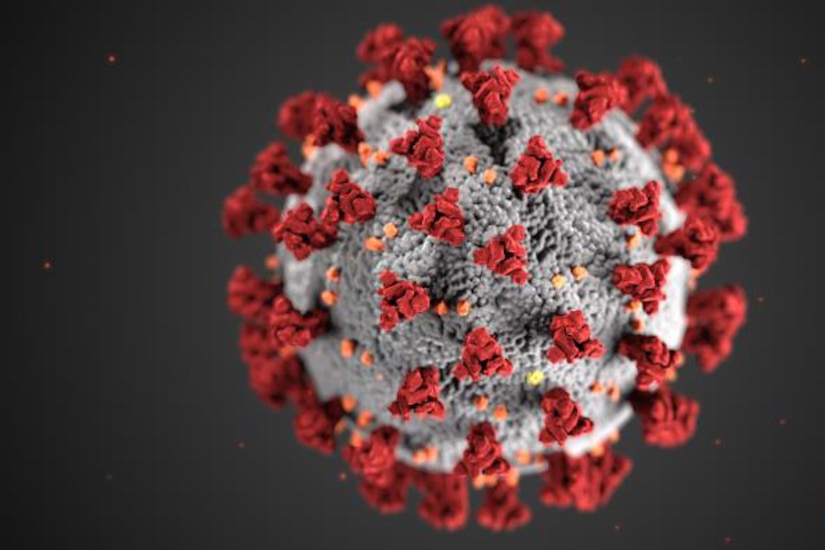
.............................................................................................................................................................
Vaccines
By Rachelle Dragani
As
COVID-19 continues its spread around the world, scientists and public health
officials are trying all kinds of solutions to slow and eventually end the
pandemic.
One
of those solutions is a vaccine.
The
introductions of vaccines are what have stopped the spread of major diseases
from polio to measles to whopping cough in the past.
You’ve
likely received a few of them in the form of a poke at different trips to the
doctor’s office when you were younger.
But
it’s a long and tedious journey from the outbreak of a disease to that simple
poke.
That’s
why it could be a long time before one is widely available for coronavirus,
making it all the more important for everyone to follow the recommendations of
the CDC so we can slow the spread of this killer.
How Do Vaccines Get Made?
Making
a vaccine requires several steps:
Identifying
the disease and finding an antigen
This
part goes on in labs, without any testing on humans yet.
Scientists
try to figure out ways to attack the virus. This looks different depending on
the virus and the vaccine.
In
vaccines like the ones for chicken pox and measles, people get infected with
just enough of a live disease to build up an immunity that prevents viruses
from reproducing over and over.
In
other vaccines, like polio and rabies, an antigen completely inactivates, or
effectively kills, the virus.
Then
there’s vaccines for diseases like Hepatitis B, which only uses a part of the
virus or bacteria, but enough in there that the harmful virus can no longer
replicate.
Depending
on the type of disease, this can be the longest or most difficult step, and the
one that can be the toughest to receive funding for if officials believe there
will never be a viable cure.
Phase
I Trials
Next
up, the vaccine gets tested in healthy adults, and scientists have to make
larger quantities of the vaccine to make sure it's possible.
Phase
II Trials
During
these, way more people get tested, scientists figure out dosage amounts and
they compare those people to others who didn’t get the vaccine at all.
Companies
also work at ways they’re going to make, package and distribute the product.
Phase
III Trials
Now
that they know a drug is safe on healthy people, here’s where the intense
testing starts on people who will actually need a drug or vaccine.
This
stage requires thousands of testers, and then years of reviewing the data after
seeing the results come in. If this goes well, the vaccine can then start to be
distributed.
The
length of these processes can depend on the type of disease, but it’s not
unusual for development to take 10, 15 or 20 years.
It’s
also not unusual for some solutions to never make it pass step one.
It’s
incredibly difficult to find the antibodies that can take down a disease, and
even if scientists think they’ve found it, they might not receive the funding
to continue their research if it’s a disease that doesn’t affect many people.
It’s
also not uncommon for a vaccine to make it past the first step, drum up a lot
of excitement, but then realize in the bigger tests that it’s just not doing as
well as everyone had hoped.
All
in all, scientists can work for years on a potential cure, only to see it never
materialize.
Will There be a Coronavirus Vaccine?
Probably.
In an incredibly swift and generous move, Chinese scientists shared the
sequenced genetic material of the virus back in January, allowing several
scientists and drug makers around the world to start coming up with different vaccines, as
well as drugs that could help to alleviate symptoms.
Some
are based off vaccines that were in the works for different respiratory
diseases like SARS and MERS in the past, which is part of the reason that many
teams have been able to develop solutions so quickly.
And
since it’s a pandemic, officials are doing everything they can to speed up the
trial times. But even working quickly, the competition to find a cure is
becoming what the New York Times is calling a “global arms race.”
Even
if smart people come up with a vaccine that’s deemed safe and effective,
creating enough and getting it out to the potentially billions of people around
the world who will need it will come with incredible supply chain, regulatory
and political challenges.
That’s
why it’s important to hope that the various vaccine trials go well, but not to
rely on that as the end to this pandemic.
Instead,
focus on social distancing or self-quarantining, hand washing and listening to
the CDC recommendations for keeping you and your neighbors safe during an
unprecedented time.
Rachelle
Dragani
is a freelance writer based in Brooklyn with extensive experience covering the
latest innovation and development in the world of science. Her pieces on topics
including DNA sequencing, tissue engineering and stem cell advances have been
featured in publications including BioTechniques: the International Journal of
Life Science Methods, Popular Mechanics, Futurism and Gizmodo.


No comments:
Post a Comment